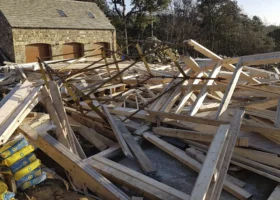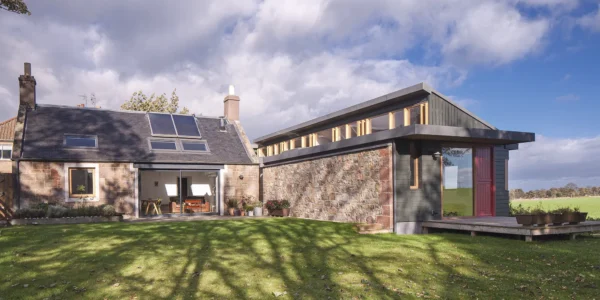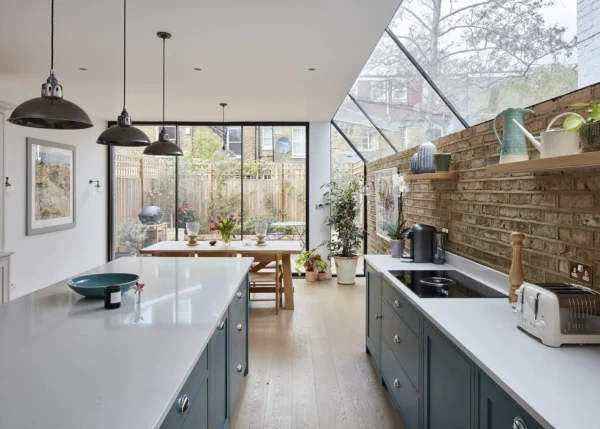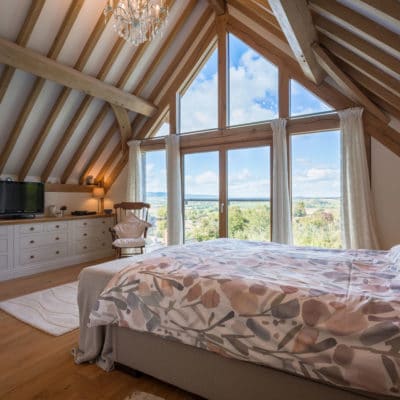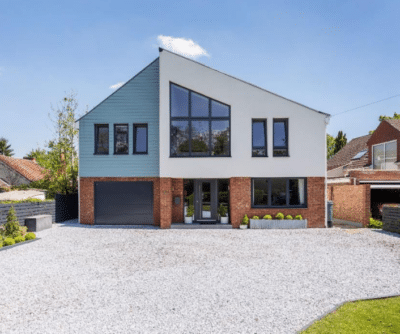Repointing Brickwork: Your 6-Step Guide to Repairing Stone & Brick Walls
Repointing brickwork can sometimes be necessary to ensure a home’s structural integrity. Masonry walls are built of a series of individual units – generally brick, stone or flint – with mortar acting as the glue that holds them together. The external face of the finished wall therefore consists of masonry units separated by mortar joints. These joints are known as pointing.
Mortar basically comprises an aggregate (sand) held in a matrix by a binder. In old walls the latter ingredient was usually lime, but might be earth or a combination of the two. Stone walls were often built with earth-lime mortar, for example, but pointed using lime.
What is Pointing & Why Does Brickwork Need Repointing?
The most obvious purpose of pointing bricks is to fill the gaps between the masonry units. This stops the brickwork from becoming loose and prevents water, draughts and foreign material such as dirt and vegetation from penetrating the wall.
Even more crucial is brick pointing’s role in managing moisture in the wall fabric. Old bricks are soft and permeable, while stone varies greatly from soft sandstones to very hard flint – but is generally relatively soft and permeable.
These materials absorb water readily; becoming wet when it rains and then drying through evaporation. The lime mortar brick pointing is also soft and permeable, which helps to ensure that this cycle of absorption and evaporation can continue to take place over the whole wall surface.
Learn More: Modern Masonry: Why Choose Brick and Block for Your Self Build Project?
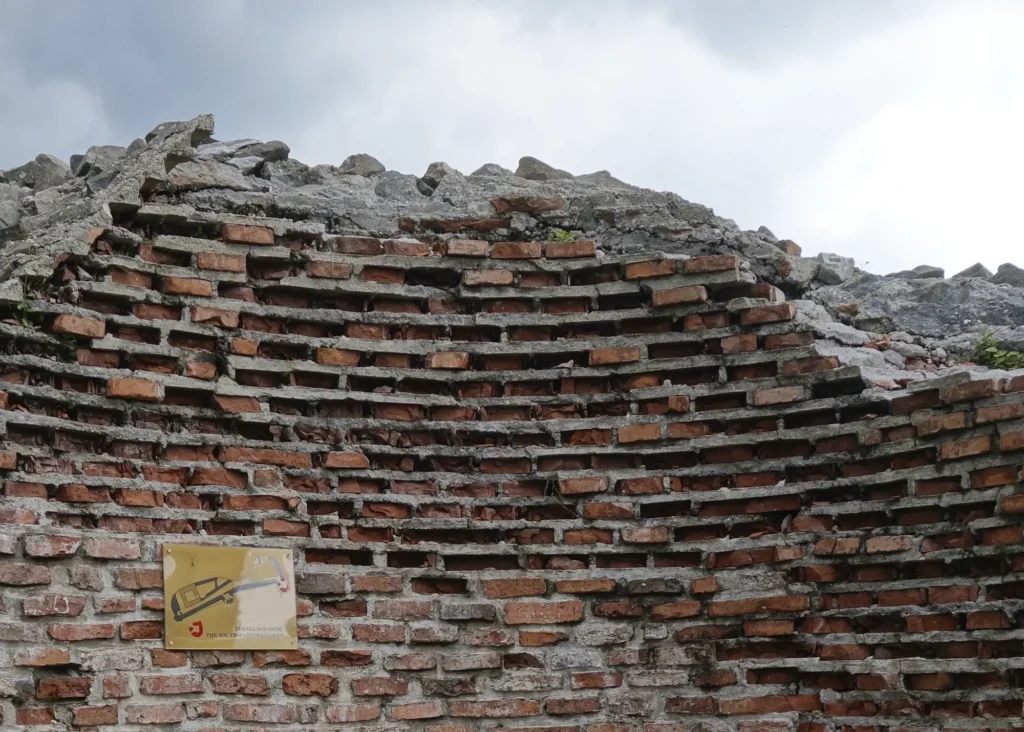
This wall was 500 years old when it was pointed with cement and now, most of the bricks have completely gone
Over a long period of time, this repeating cycle causes erosion of the surface of the material. If there is a frost while the wall fabric is still wet, the water in the wall freezes and expands, causing damage to the surface. This is when repointing brickwork is necessary.
To mitigate this, the pointing mortar is intentionally made softer and more permeable than the masonry units. This ensures moisture is concentrated in the mortar joints as opposed to the wall fabric. Most of the evaporative drying therefore happens in the pointing rather than the bricks or stones.
Here are my 6 steps to repointing brickwork successfully for lasting results:
1. Address the Cause Before Repointing Brickwork
With any repair to building fabric, the first step must be to assess what is causing the damage. Otherwise the same issue is likely to be repeated in the future, making your hard work pointless. In very old buildings, wear and tear due to age is always a significant possibility. But unless the bricks were of very poor quality in the first place, this is less common than you might think – there is plenty of Roman brickwork still functioning perfectly well.
Physical damage can occur, sometimes from a single event, such as a vehicle collision, but more often as the result of frequent abrasion over time. By far the most common damage is brick spalling (disintegration of the face) as the result of freeze/thaw action when the bricks are wet. In this instance, it is essential to identify the reason the bricks are wet and sort that out first.
2. Why Are Your Bricks Wet?
Most old brickwork is formed of soft bricks, fired at a much lower temperature than modern bricks. This makes them more absorbent, but they should not be persistently wet in normal conditions.
The most common cause of wet walls is inadequate or leaking rainwater goods (gutters and downpipes). These might be causing water to run directly into the brickwork or saturating the ground near the wall.
Because old buildings were generally built without a damp proof course, this can result in excess moisture in the base of the wall. The solution is to sort out the gutters first, not to install an injected DPC.
Considering handmade bricks for your repointed brick walls? Read our Complete Guide to Handmade Bricks
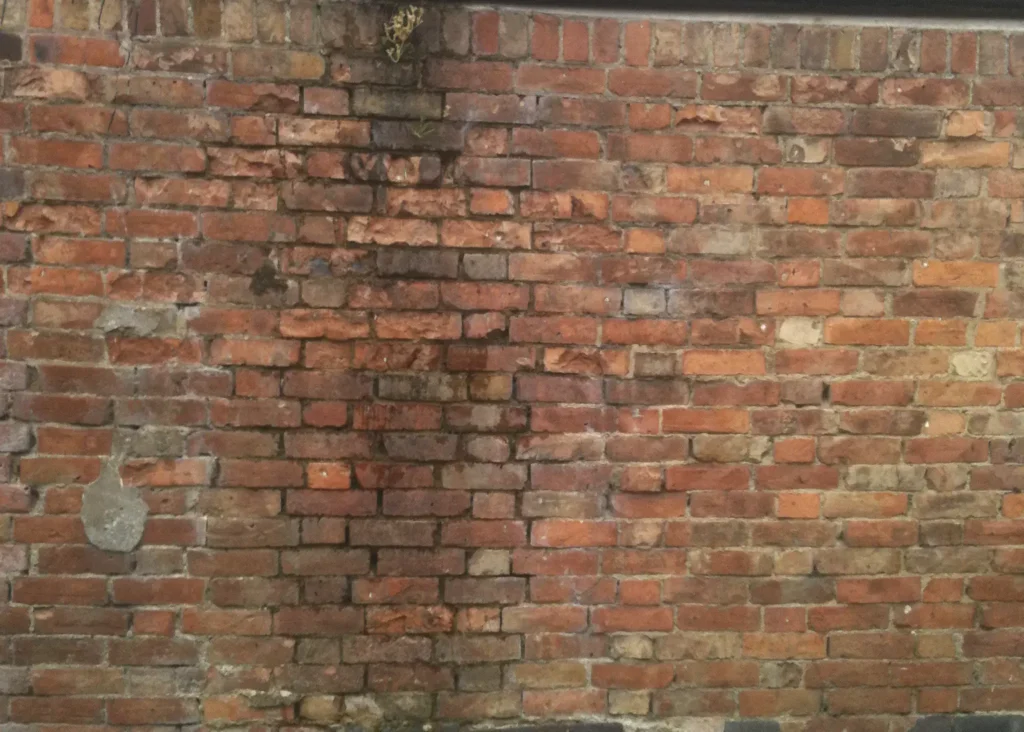
A leaking gutter is saturating the brickwork, causing it to fail
Poor detailing, particularly around roofs, windows or junctions can lead to rainwater runoff into a section of wall, causing saturation. High ground levels or hard landscaping against the base of walls can also increase the moisture load in the bricks.
Soluble salts can be absorbed by bricks over time. These are hygroscopic, which means they attract moisture and tend to hold it in the bricks. This can happen in chimneys where salts in the burning fuel have contaminated the bricks. Excess groundwater rising up the walls often carries dissolved salts, depositing them in the bricks (this might be the result of a past problem, now resolved).
Road splash can also make walls very wet and may carry high salt concentrations if the road is gritted in winter. Unfortunately, there is very little you can do about salts in brickwork apart from taking steps to prevent it happening in future, by maximising the potential for the bricks to dry out.
TOP TIPS For successfully repointing brickwork
|
3. Cement Brick Pointing
Old walls built using soft, low fired bricks used lime mortar both for bedding and pointing. The lime mortar is both more absorbent and softer than the bricks.
This means that water is concentrated in the mortar rather than the masonry. When cold weather strikes, thaw action erodes the mortar and not the bricks.
An inevitable result of this process is that old brick walls need to be periodically repointed (about once in a generation). As cement became the predominant material for mixing mortar during the 20th century, it was common for old walls to be repointed using it.
More Ideas: Inspiring Brick and Block Houses: 14 of the UK’s Best Masonry Homes
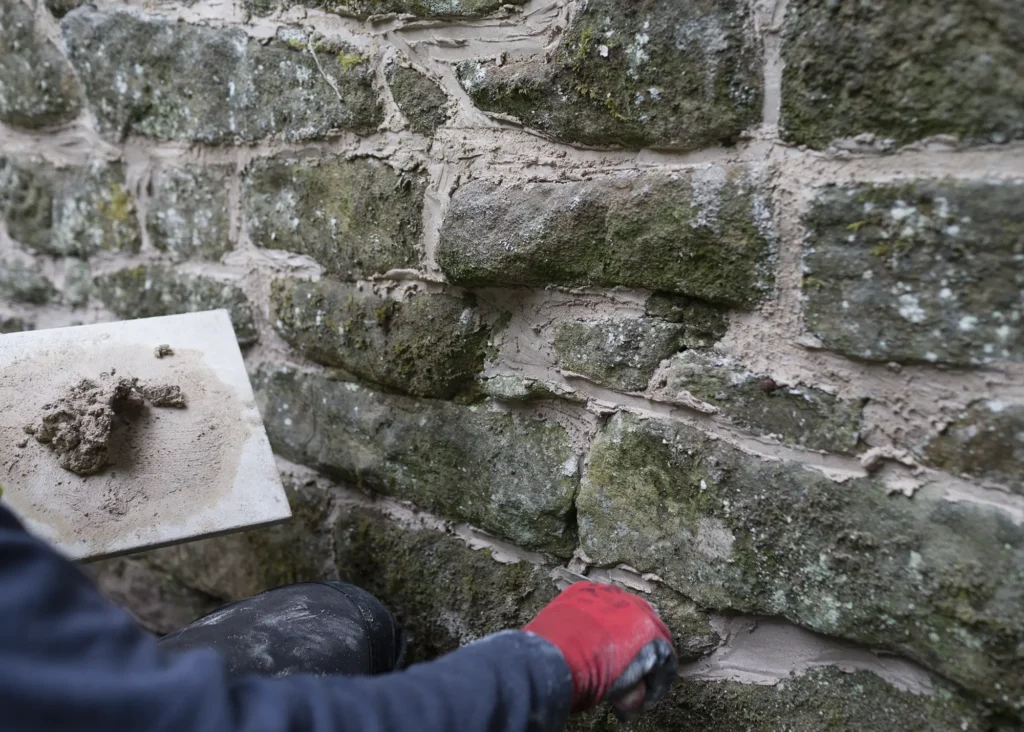
This stone wall is being repointed by a SPAB member using a non-hydraulic hot mixed lime mortar of local quick lime and quarried sand. Photo: SPAB / Ralph Hodgson
This mortar is much harder than the bricks and almost completely non-absorbent. As a result, water becomes concentrated in the bricks, meaning they erode instead of the mortar. If there is excess water in the bricks because of one of the factors described above, this damage can be very severe and threaten the structure.
An additional problem with cement mortar is that it is very rigid, while the underlying brickwork is quite flexible. This causes the pointing to crack and begin to fail, which allows water to penetrate the joints, where it is trapped. The only route out of the wall is through the soft bricks, increasing any damage even further.
4. Is Repointing Brickwork Necessary?
Brickwork repair and repointing is a large scale intervention in the fabric of an old building. Any time that work like this is carried out there will be some inevitable damage to the fabric, so it’s always important to consider whether the repair is absolutely necessary.
If bricks are damaged, is it really a problem that needs to be fixed? An example is where there are old marks from passing carriages or score marks from ropes.
These are most unlikely to be a structural issue and add to the overall character of the building, making repair inappropriate. It’s not usually that straightforward. Very severely spalled brickwork is likely to need repair – it is unsightly, might weaken the wall and is potentially progressive since the core of a brick is much weaker than the face. Slight spalling is more of a judgement call. If it’s just the odd brick it might be best to leave it unless there is work already being carried out.
More Expert Advice: Choosing the Right Materials for a Period House Renovation
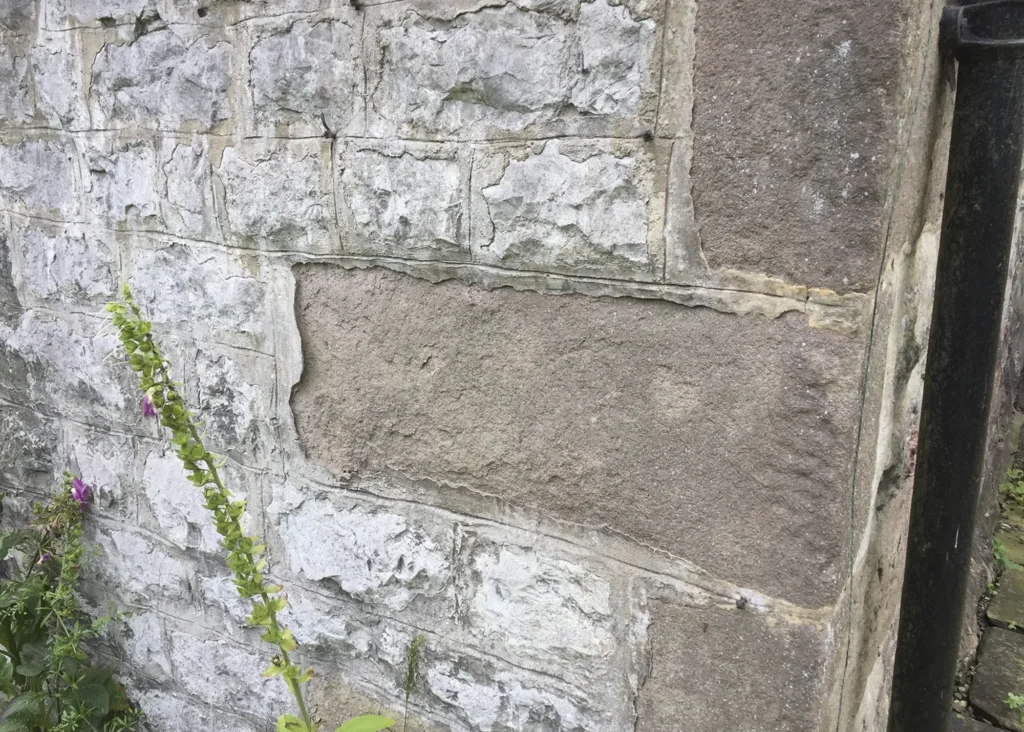
Use of inappropriate cement pointing has caused the face to blow off this stone
While cement pointing is potentially very damaging, whether it is actually causing a problem depends very much on other factors, including the nature of the actual bricks and the degree of exposure. A dry wall with good quality bricks might manage indefinitely without any damage. Removing cement pointing (especially if it hasn’t started to fail) is a very physical process during which it’s almost impossible not to damage the bricks, so it should only be carried out when absolutely vital.
If the pointing is failing, and bricks are wet and spalling, obviously it must then be raked out and repointed. Most cases will fall somewhere between these extremes and can need careful judgement.
5. Repairing Damaged Exterior Bricks
Damaged brickwork should be repaired using materials as similar as possible to those used to build it so that the repair is compatible. Using modern bricks and cement mortar will create a section of wall that behaves differently to the rest, setting up stresses that can cause structural failure.
The best bricks to use are the actual bricks from the wall, wherever possible. In the case of physical damage most of the bricks will themselves be in tact and can be used in the repair.
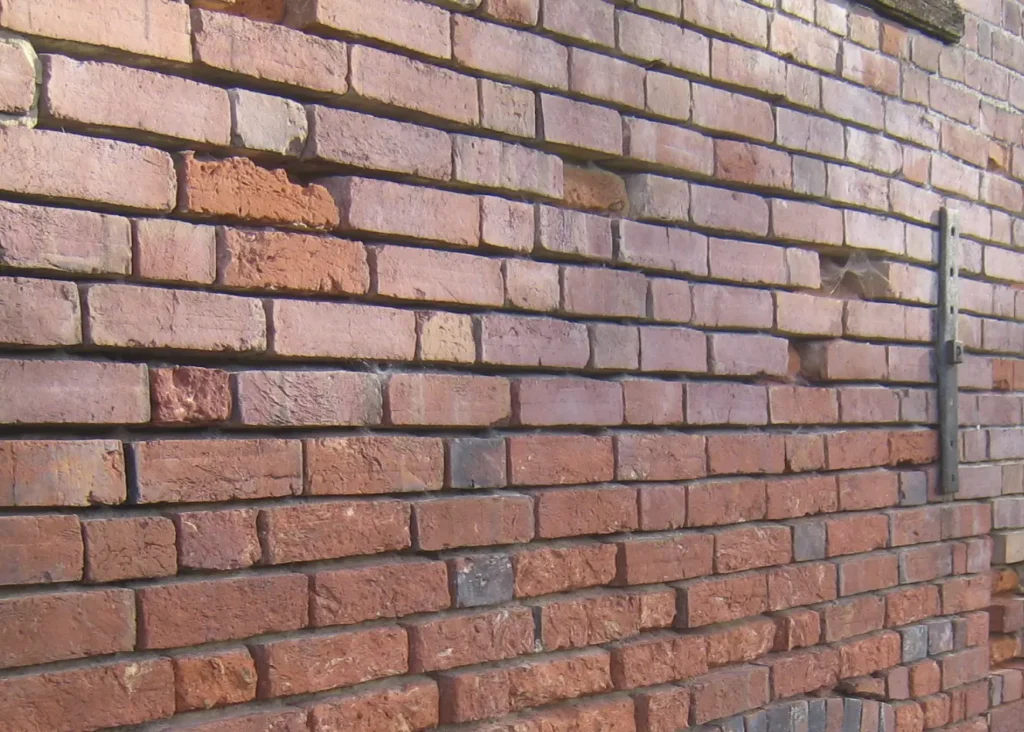
Cement pointing has been removed and repair decisions must be made before repointing. Some bricks can stay as they are, others rotated; but some must also be replaced
Because they were bedded in lime mortar they can easily be cleaned and reused. Where additional bricks are needed, the best solution is usually to find used bricks from the local area, so long as they are in good condition and from a reputable source. If you have to source new bricks they should be handmade in the closest possible match.
Spalled bricks can often be removed from the wall, rotated and reset in lime mortar with the undamaged face to the outside. If they are too badly damaged replacement bricks can be sourced as above.
CLOSER LOOK What can go wrong when repointing brickwork?The most common problem you’re likely to encounter when repointing brickwork is that previous repointing has been carried out using inappropriate mortar. Modern versions use Portland cement as a binder. This creates a hard, impermeable mortar that suits modern bricks that have been fired at very high temperatures. When used with the softer masonry units in old walls, however, it can have very serious consequences. In period properties, cement mortar blocks the evaporation route through the mortar joint and concentrates water in the bricks or stones, causing these to erode instead of the pointing. When there’s a frost the wet masonry units are then subject to freeze/thaw action. This causes spalling of the face of bricks, where the protective skin on the surface is blown off. In severe cases whole bricks or soft stones can completely disintegrate. The hard, inflexible modern cement pointing is incompatible with the soft, flexible mortar behind it and begins to crack and fail. This allows water into the wall fabric, where it becomes trapped, which can ultimately cause the core of the wall to degrade. In addition, contrary to what you might expect, cement pointing in an old wall will fail much more quickly than softer lime versions. When pointing does start to fail, whether through natural erosion of lime mortar or the failure of inappropriate cement mortar, the ability of the wall to manage moisture is compromised and it will tend to become damp. Ultimately, the wall’s structural integrity will be compromised. Roots and germinating seeds of plants can start to grow in failed joints, causing serious problems as they expand. Read More: 10 Renovation Mistakes to Avoid |
6. How to Repoint Brickwork
The good news is this is a relatively straightforward job that can be undertaken by any competent person with a bit of instruction and training. The first stage is to rake out the old pointing to remove any failing mortar and provide sufficient depth (10mm) to key the new pointing. You’ll also need to get rid of any very loose and friable mortar, which might involve going deeper.
With a stone wall in poor condition that might be very much deeper. If you get to the stage where the stability of masonry units or integrity of the wall deteriorates, then it is time to call in an expert.
Once the joints have been raked out, they must then be dampened with a fine water spray. This step helps to prevent the new pointing from drying too quickly and failing. The new mortar is then forced into the joints with a pointing iron or small trowel, ensuring that it is well packed and finished slightly proud. For very deep joints this will be a two stage process, allowing the first stage to go off before progressing to the second.
Once the mortar has started to harden (when it can just be marked with a thumbnail) it should be knocked back into the joints. Finally the pointing should be rubbed back to just behind the masonry units, making sure that it does not go over their edges.
CLOSER LOOK Which mortar should I use when repointing brickwork?The best bet is to try to match the original pointing mortar as closely as possible. This is most likely to be compatible with the particular brick or stone used to build the wall originally. It will also maintain the appearance of the wall and help to ensure it fits in with the local vernacular tradition. Lime mortars fall broadly into three categories, each of which has different properties and applications: Hydraulic MortarsThese include material that causes them to set quickly and develop higher strength than other lime mortars. They vary greatly in strength, with those at the top of the scale becoming even harder than cement. They are rarely appropriate for repointing old masonry but the weakest hydraulic mortars can be used in exposed situations with very hard stone. Great care must be taken if you’re considering them. Lime Putty-Based MortarsThese are non-hydraulic. Formed by slaking quicklime, the putty is used as the binder and mixed with carefully-selected sharp sand. This is widely available in ready-mix form, and can be stored almost indefinitely before use, provided air is excluded. It is straightforward to use and sets as a result of exposure to CO2 in the air. It provides a soft, flexible and highly breathable pointing that is compatible with most old masonry. Hot Mixed Lime MortarThis is also non-hydraulic, but is made onsite by combining quicklime, sand and water. Quicklime is hazardous and requires careful handling – nobody should attempt hot mixing without proper training. It makes a very workable mortar that is extremely easy to use. Hot mixed lime mortar pointing has exceptional moisture management properties, actively wicking water from the surrounding fabric. It is by far the best material to use in damp masonry, as it dries walls out quickly and effectively. |
The surface finish should be a rough, open texture to maximise the potential for evaporation. Struck pointing or ribbon pointing, seen much too often in the repair of old walls, is not appropriate either visually or functionally.
Some walls were originally pointed using specialist decorative techniques. These include tuck pointing – popular in Georgian brickwork – and galleting (the incorporation of stone chips in thick joints of stone or flint walls). These are specialist techniques that will require an experienced craftsman.
Repointing brickwork is a process that can be undertaken by practical people as a hands on project. One of the most accessible guides available can be found at The Society for the Protection of Ancient Buildings.
Essential Advice: Home Renovations: 10 Steps to Successfully Renovating a House
This article was originally published in April 2018 and has been updated in January 2024.
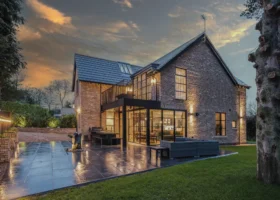



































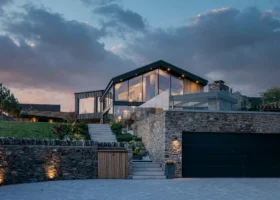

























































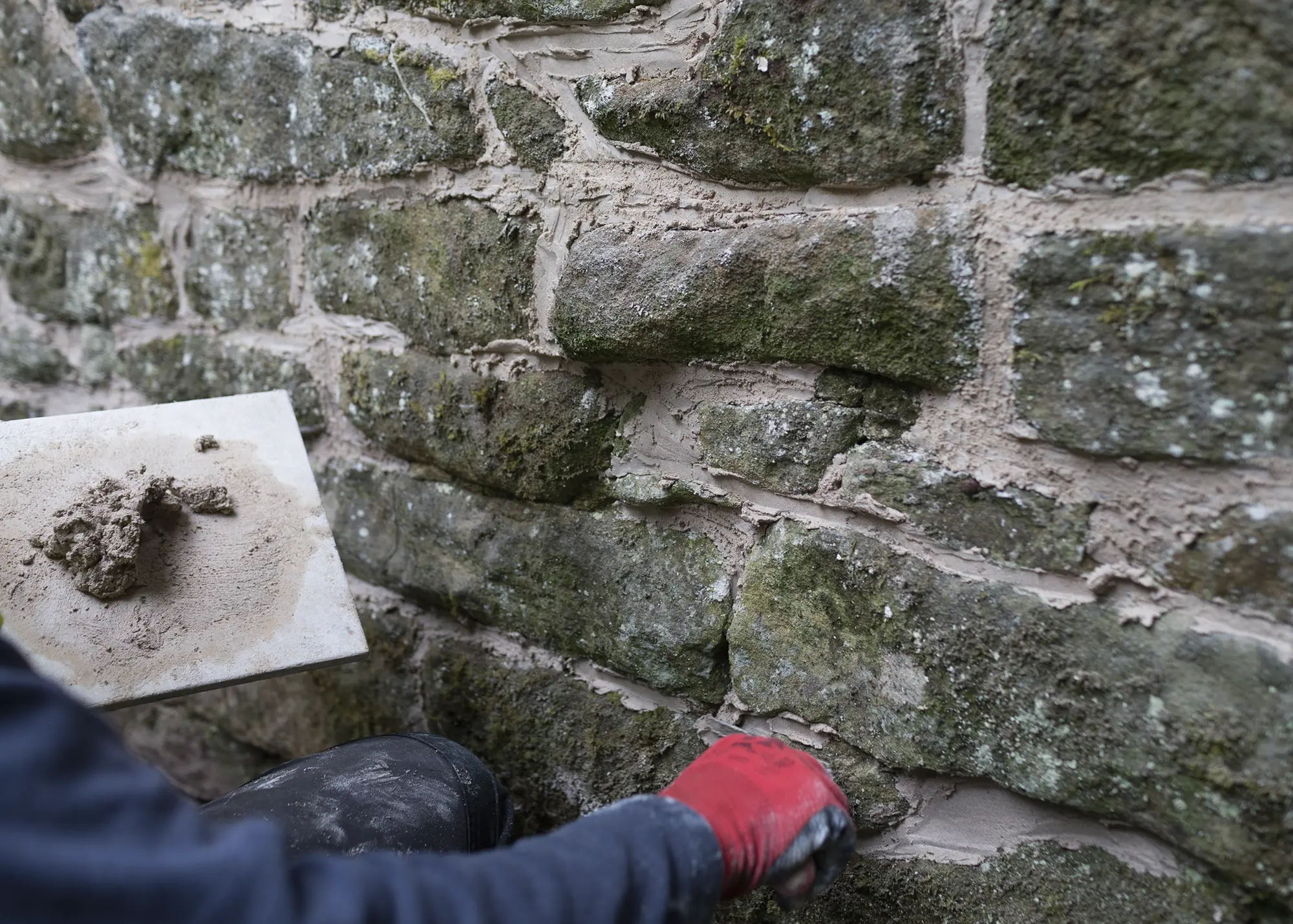
 Login/register to save Article for later
Login/register to save Article for later

